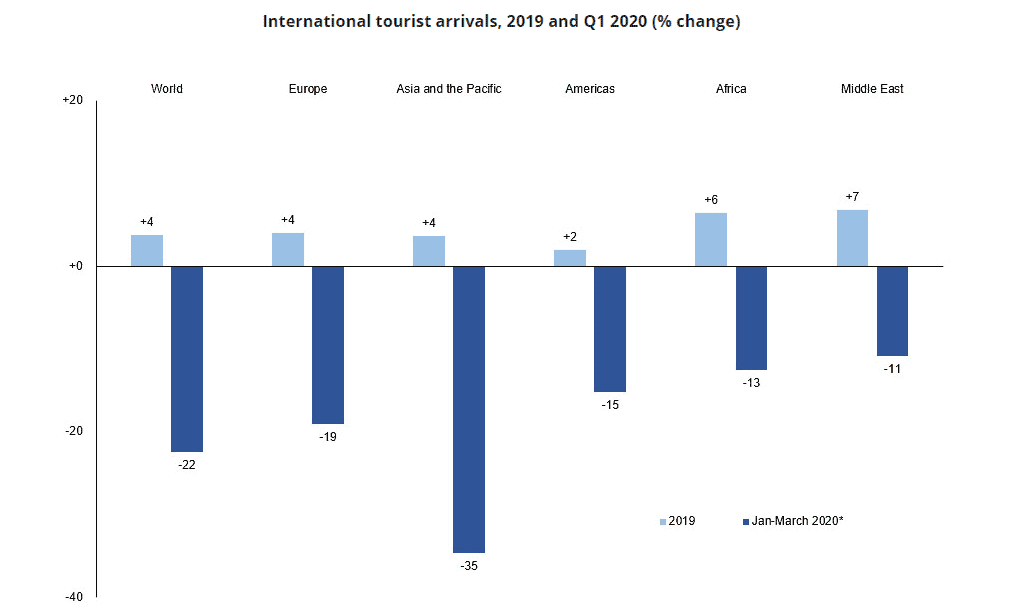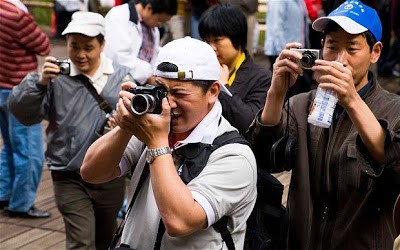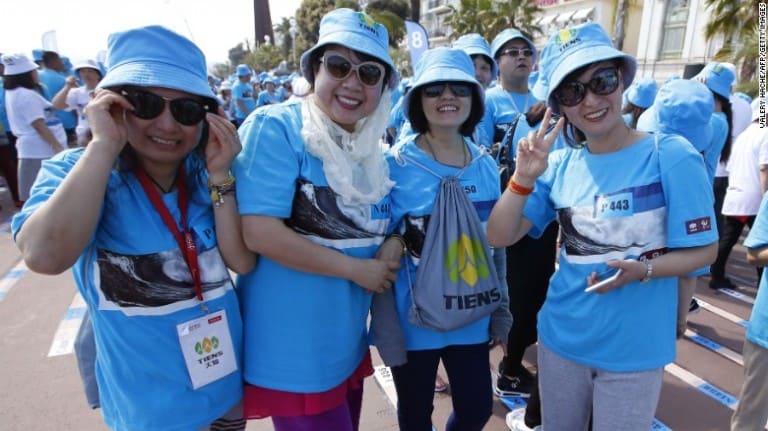The tourism industry in a bad patch in 2020
With government restrictions on Covid-19, billions of people are at home, crippling international travel and tourism.
The tourism market is being hit hard, with massive job cuts.
One in ten jobs and 10% of global GDP are linked to travel and tourism.
Up to a third of these jobs, or more than 100 million jobs, and some $2.7 trillion of GDP could be threatened by the current crisis.
Let us take a closer look at what is happening in the global tourism industry.
- The hardest-hit countries
- The costs of tourism-related restrictions
- Domestic travel offers a glimmer of hope
I. The hardest-hit countries
According to the United Nations Conference on Trade and Development, a 25% drop in tourism revenues will lead to an average 7% drop in the GDP of the “small island developing states”.
In places such as the Maldives and Seychelles, this contraction could be as much as 16%.
The situation is no better in Europe.
Indeed, the European Parliament estimates that the European Union’s tourism industry is losing about 1 billion euros ($1.1 billion) in revenue per month.
Although crucial for the global economy, the reopening of borders could lead to an upsurge in COVID-19 cases.
In *Morocco, all entries are banned since the beginning of this crisis, and many tourists are forbidden to visit Morroco.
The European Commission has unveiled measures to help EU countries revive tourism, despite knowledge of the risk from the coronavirus.
– It proposes to lift travel restrictions between countries where epidemics are contained.
– It encourages the use of contact tracing applications.
– It recommends a new voucher system to protect tour operators from exposure to mass cancellations.
“The key challenge is to build trust between countries so that borders can be reopened without risk of re-infection and to convince the general public that flights are safe,” said John Holland-Kaye, CEO of London Heathrow Airport, Europe’s busiest airport.

II. The costs of tourism-related restrictions
To restore the confidence of travelers, restrictions are necessary.
On the other hand, health checks and clean-up protocols increase costs at a time when the sector’s finances are in tatters due to the collapse of the travel industry.
The Global Travel and Tourism Council is working with governments and travel organizations to agree on standardized health controls and cleaning protocols.
Guidelines for the hotel and restaurant industry should be published, as well as advice for airports.
The United Nations World Tourism Organisation estimates that the reduction could be as much as 80% from 2019 onwards, depending on the duration of travel restrictions.
“This is by far the worst crisis that international tourism has faced since registration began [in 1950],” the UN body said in a statement last week. “The impact will be felt to varying degrees in different regions of the world and at overlapping times, with Asia and the Pacific expected to be the first to rebound.
All advertising in China has been switch to Online in 2020… (China is a super digitalized country)
III. Domestic travel offers a glimmer of hope

Although it’s too early to talk about a recovery, there are early signs that the trend will be domestic travel.
Following the near-complete closure of the country, China began easing restrictions on coronavirus lockout in March.
More than 30 percent of domestic airline capacity has returned since March 1, according to aeronautical analysis firm Cirium.
“Green shoots in the Chinese domestic market … are a positive sign for the resumption of short-haul travel,” the company said in a research note. “It is clear that with the easing of certain travel restrictions, the domestic market will start to come back first”.
The Marriott said Monday that occupancy rates at its hotels in Greater China reached 25 percent in April, up from less than 10 percent in mid-February.
An increase in spending on local tourist attractions and a resumption of hotel and bed and breakfast bookings was recorded on the Meituan Dianping application.
Nevertheless, due to a massive influx of visitors, some tourist attractions in China had to be closed soon after they reopened.
Unfortunately, the restrictions are now being lifted again with the outbreak of new cases of the virus.
The International Air Transport Association estimates a return to normal for at least five years.
In conclusion
It is indeed the “stays” that should spearhead the sector’s eventual recovery.
At the top of the list are the United States, France, Mexico, Brazil, China, Japan, India, the Philippines, Germany, and the United Kingdom, where domestic tourism accounts for more than 80 percent of total travel and tourism spending, according to the World Travel and Tourism Council.
The yoga however, has seen a big increase this year 2020.
Asia Pacific has the largest regional travel market, which bodes well for some islands, such as Maldives and Fiji, provided tourists choose destinations closer to home.
Read also
https://chinesetouristagency.com/how-to-revive-the-2020-season-with-chinese-tourists/
https://chinesetouristagency.com/how-to-find-a-good-chinese-tour-partner-in-2020/
https://chinesetouristagency.com/how-to-promote-your-destination-to-chinese-tourists-with-fliggy/
https://chinesetouristagency.com/how-to-promote-a-luxury-resort-to-chinese-tourists/
https://chinesetouristagency.com/top-12-opportunities-in-china-as-a-foreigner/
https://chinesetouristagency.com/accelerating-monetization-on-the-chinese-xiaohongshu-platform/






